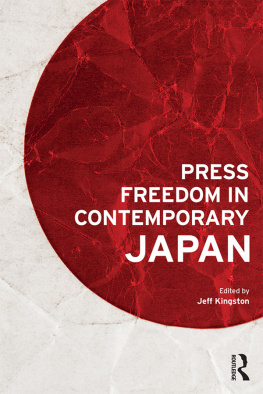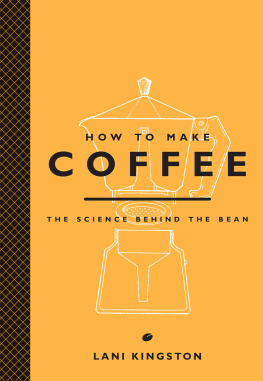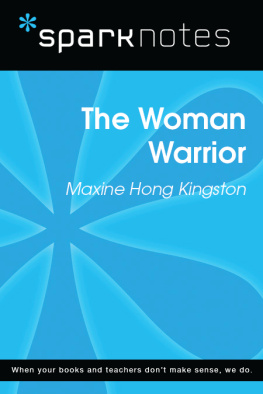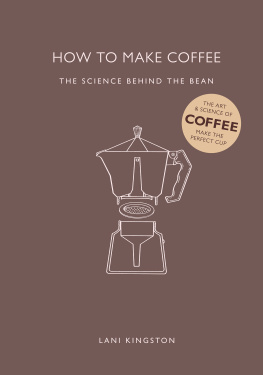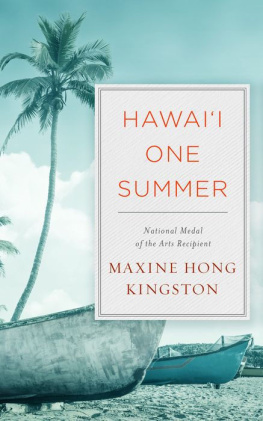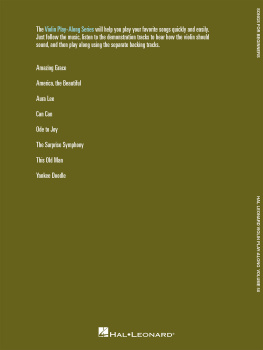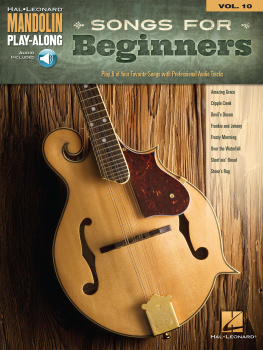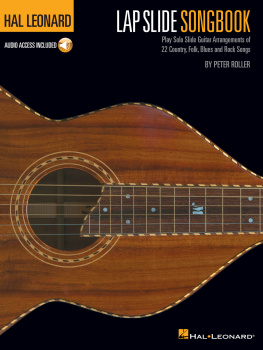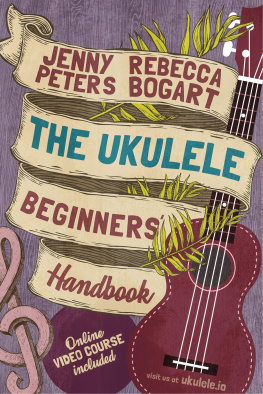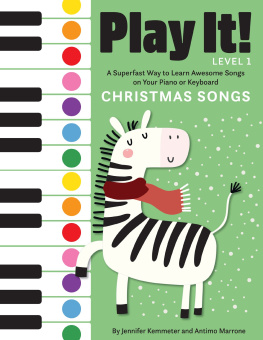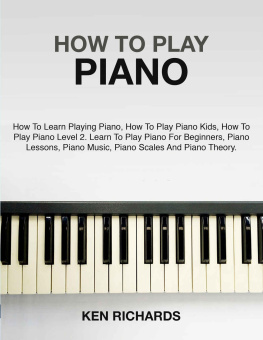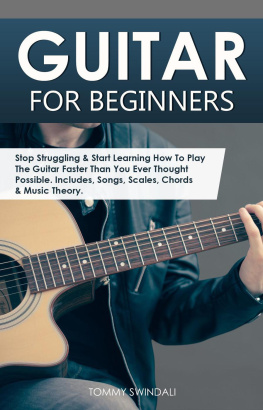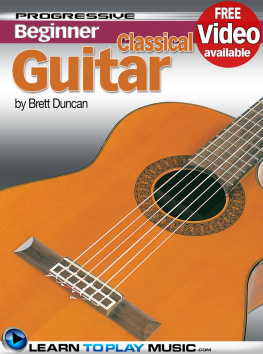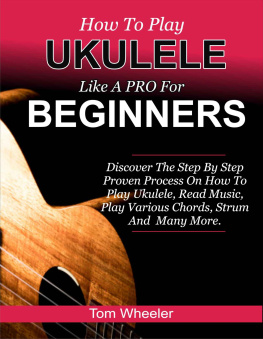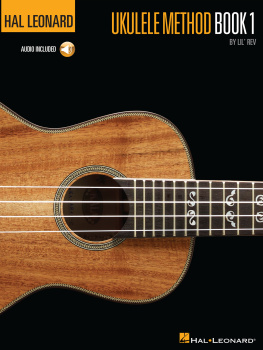The First Kalimba Song Book for Beginners
Play by Letter: 40+ easy to play songs for beginners. How to Tune Your Kalimba and Learn Tablature Reading.
RUPERT J. KINGSTON
Copyright 2021 RUPERT J. KINGSTON All Rights Reserved
N rt f th ubltn m b rrdud, trd n rtrvl tm, r trnmttd n n frm r b n mn, ltrn, mhnl, htng, rrdng, nnng, r thrw, xt rmttd undr tn 107 r 108 f th 1976 Untd tt rght t, wthut th rr wrttn rmn f th ublhr.
Limit of Lblt/Dlmr f Wrrnt: h ublhr nd th uthr mk n rrnttn r wrrnt wth rt t th ur r mltn of the ntnt f th wrk and specially disclaim all wrrnt, nludng wthut lmttn wrrnt f ftn fr rtulr ur. N wrrnt m b rtd r xtndd b l r rmtnl mtrl. h dv nd trtg ntnd hrn m nt b utbl fr vr tutn. h wrk ld wth th undrtndng that the Publisher is not engaged in rndrng mdl, lgl, or other professional tn rqurd, th rv f mtnt rfnl rn huld b ught. Nthr the Publisher nor the Author shall be liable for damages arising herefrom. The fact that an individual, rgnztn, r wb t rfrrd t n th wrk ttn nd/r tntl ur f furthr nfrmtn d nt mn tht th uthr r th ublhr ndr th nfrmtn th ndvdul, rgnztn, r wbt m rvd r rmmndtn th/t m mk. Furthr, readers should be aware that websites listed in this work may have changed or disappeared between when this work was written and when it is read.
Cover Designer: Mark Buster
Photo Art Director: Federica Kesh
Editor: Andrew Cortese
CONTENTS
INTRODUCTION
History of the Kalimba
Some call it the frn thumb piano. It is an ntrtng ntrumnt that might be classified as percussion. t nt f thn metal blades, the keys or tines, fixed to a sounding board. hr r vibrato holes that help to shape the notes.
Dr. Hugh Tracey is the one who invented the Kalimba. The Kalimba is an instrument with its inceptions in South Africa. Hugh Tracey was an Englishman from Devonshire, England. So how does an Englishman create an instrument from South Africa? In his childhood, as opposed to going on to Cambridge or Oxford for instruction, Hugh Tracey chose to deliver off to South Africa in the 1920s to look for his fortune on a relative's tobacco ranch in Rhodesia (presently Zimbabwe).
Hugh got interested in the neighborhood music culture and was especially intrigued by a group of instruments known as Mbira - (ehm-BEE-rah). Mbira, otherwise called 'Thumb-Piano' has its inceptions in Zimbabwe. Of the various instruments in the mbira family, the most consecrated and loved instrument is the: Mbira dza Vadzimu - articulated (ehm-BEE-rah-zah-vahd-ZEE-moo) ...Mbira of the Ancestral Spirits.
Hugh Tracey changed and re-designed the Mbira. His splendid re-designing of the Mbira in the 1960's turned into "Another" African Musical Instrument... "Kalimba." Despite being included in our vernacular, "Kalimba (TM)" is an enrolled brand name (Patent Nos. 22,565, 60/3777, 900,796, 68/7040).
As an instrument, t h grt mbl meaning on the African continent.
In the group of musical instruments, the Kalimba has classed as lamellophones or plucked idiophones (Hornbostel-Sachs system).
Kalimba variants are found in Africa, such as playing the Kankobela with 7 to 12 keys in Zambia. They play the Likembe in Congo, which has eight keys for pentatonic tuning.
A kalimba is an instrument not familiar to many people, but it has become increasingly popular in recent years due to the internet.
There's a 15-key kalimba turned into a major key. We develop the19-key Kalimba for players who want to play more keys, which has the same b tunng nd lut as the 15-key Kalimba, but with additional keys of the same size.
It's like a wooden box with metal rods on it, but these metal rods really are the ones that make the Kalimba play your sounds. They can make high-pitch sounds if you pluck them.
It has some strategically placed holes, just like other instruments, such as the guitar, that make the instrument to sound in a particular way. The front has one large circular soundhole, and the back has two small ones. A little bit broader than the bottom is the peak of the Kalimba. It has a backstop at the top on the front side, a Z-bracket, a bridge, and the rods are actually called tines.
Because of the interesting design of the Hugh Tracey "Kalimba", Any two nearby notes make a melodic sounding harmony. The harmonies are orchestrated and mix well together. Anybody can begin Sounding Good Right Away!
A Kalimba does not have those discordant chord patterns that ALL the other instruments have on adjacent strings. Adjacent note chords that are harmonized are often formed. This means that any combination of 2 adjacent notes, with only one exception, will sound nice - the bottom note... But ... but, uh... Only pluck the bottom note on its own, and it sounds like G-R-E-A-T, and every 2-note chord harmonizes with it.
It creates nice pretty-sounding chords that harmonize together if you swipe your thumb over any adjacent 2, 3, 4 or more note combination.
No other instrument has this special setup. Presently anybody can play an instrument and make delightful music directly from the very beginning. A Beginner Can Start Making Beautiful Sounding Tones Right Away... - Just By Plucking Any 2 Adjacent Notes with one's thumbnails-Just keep any sort of cadence and Finish off your arrangement by culling the root note (either the upper right or base note).
In under 10 minutes, you can make your first bit of music on the Kalimba... Furthermore, It Sounds Good Right Away! No harsh, noisy notes. The notes orchestrate and make pretty-sounding harmonies. Presently Anyone Can Make Beautiful Music Right Away.
Figuring out how to play Kalimba isn't that troublesome, despite the fact that numerous individuals run from it from the start. Since it is quite a lovely instrument, we have chosen to give you a few hints that will permit you to learn quicker. Further in this book, we will discuss the instrument itself and how to transform it into Magic.
What is a Kalimba?
m ll t th frn thumb n. t n ntrtng ntrumnt tht mght b lfd run. t nt f thn mtl bld, th k r tn, fxd t undng brd. hr r vbrt hl tht hl to shape the notes. It is sometimes also called a Mbira.
t h bn ud n frn untr fr ntur t wrd ff vl spirits from sick people and also to pray for rain. n ntrumnt, t h grt mbl mnng n th frn ntnnt.
In the group of musical instruments, the Kalimba is classed as lamellophones or plucked idiophones (Hornbostel-Sachs system).
Others are Nyunga nyunga, Nyonga nyonga and Karimba. Karimba translates into a little wooden xylophone," and Nyunga nyunga translates into something funny...
Kalimba variants are found in Africa, such as playing the Kankobela with 7 to 12 keys in Zambia. They play the Likembe in Congo, which has eight keys for pentatonic tuning.
A kalimba is an instrument not familiar to many people, but it has become increasingly popular in recent years due to the internet.
There's a 15-key kalimba turned into a major key. We develop the19-key Kalimba for players who want to play more keys, which has the m b tunng nd lut as the 15-key Kalimba, but with additional keys of the same size.
It's like a wooden box with metal rods on it, but these metal rods really are the ones that make the Kalimba play your sounds. They can make high-pitch sounds if you pluck them.
It has some strategically placed holes, just like other instruments, such as the guitar, that make the instrument to sound in a particular way. The front has one large circular soundhole, and the back has two small ones. A little bit broader than the bottom is the peak of the Kalimba. It has a backstop at the top on the front side, a Z-bracket, a bridge, and the rods are actually called tines.



